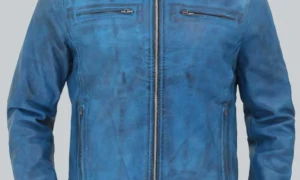Embroidery digitizing transforms designs into stitched masterpieces, and using water-soluble embroidery stabilizer topping is a common practice to achieve crisp and precise results. However, once the embroidery is complete, removing the stabilizer topping is a crucial step in unveiling the full beauty of your work. In this guide, we’ll explore the process of safely and effectively removing water-soluble embroidery stabilizer topping.
I. Introduction
Water-soluble stabilizer topping serves as a temporary support during the embroidery process, preventing stitches from sinking into textured fabrics and ensuring the design remains visible. Knowing how to remove it without compromising the integrity of your embroidery is essential.
II. Materials Needed
- Clean Water: Use lukewarm water for optimal solubility.
- Soft Cloth or Sponge: Gently dabbing the stabilizer helps accelerate the dissolving process.
- Mild Detergent (Optional): If the stabilizer is stubborn, a small amount of mild detergent can be used.
III. Preliminary Checks
- Embroidery Completion: Ensure that your embroidered piece is fully completed before attempting to remove the stabilizer topping. Removing it prematurely can distort the stitches.
- Fabric Suitability: Confirm that the fabric can tolerate moisture. Delicate fabrics may require extra care during the removal process.
IV. Steps to Remove Water-Soluble Stabilizer Topping
- Prepare the Area:
- Lay your embroidered piece on a clean, flat surface.
- If the stabilizer covers a specific design area, focus on that section.
- Dabbing with Water:
- Dip a soft cloth or sponge in lukewarm water.
- Gently dab the stabilizer topping, ensuring it gets uniformly moistened.
- Allowing Dissolving Time:
- Patience is key. Allow the water-soluble stabilizer topping to dissolve naturally.
- For stubborn areas, you can slightly agitate the water with your fingers or the cloth.
- Gentle Rubbing (Optional):
- If needed, gently rub the dampened stabilizer with your fingers. Be cautious not to disturb the stitches.
- Repeat as Necessary:
- If some areas persist, repeat the process until all traces of the stabilizer are gone.
- Rinse and Dry:
- Rinse the entire piece with clean water to ensure no residue remains.
- Pat the fabric dry with a clean, dry towel.
V. Additional Tips
- Use Distilled Water:
- If your tap water has high mineral content, consider using distilled water to avoid any mineral deposits on the fabric.
- Air-Dry Preferred:
- Air-drying is recommended over using a heat source, as excessive heat may cause the stabilizer to set rather than dissolve.
VI. Testing on Scrap Fabric
Before applying the removal process to your finished embroidered piece, consider testing on a scrap piece of fabric with similar characteristics. This ensures that you are familiar with the reaction of both the stabilizer and the fabric.
VII. Seeking Professional Assistance
If you’re uncertain about the fabric’s compatibility or encounter difficulties during the removal process, consider seeking professional assistance, especially when dealing with valuable or delicate textiles.
VIII. Conclusion
Removing water-soluble embroidery stabilizer topping is the final step in bringing your embroidered creation to its full potential. As you embark on this process, approach it with care, patience, and an understanding of the fabric’s needs. With the right technique, you’ll reveal the true beauty of your meticulously digitized and embroidered design.
Embrace the satisfaction of completing the embroidery journey by unveiling a crisp, clean, and beautifully stabilized masterpiece.
FAQs
- Can I use hot water to expedite the dissolving process?
- It’s advisable to use lukewarm water to avoid any potential damage to delicate fabrics or stitches. Hot water may compromise the integrity of both the fabric and the stabilizer.
Is there any Best Embroidery digitizing services Provider? ZDigitizing offers high-quality Embroidery digitizing services and Vector Art Services
- It’s advisable to use lukewarm water to avoid any potential damage to delicate fabrics or stitches. Hot water may compromise the integrity of both the fabric and the stabilizer.
- Are there special detergents recommended for stubborn stabilizer removal?
- While mild detergents can be used sparingly, it’s crucial to ensure they are gentle and free of harsh chemicals that may affect the fabric or stitches.
- How long does it typically take for the stabilizer to dissolve?
- The dissolving time can vary based on the type and brand of stabilizer. Generally, allowing a few minutes for the stabilizer to soak and dissolve is sufficient.
- Can I use a washing machine to remove water-soluble stabilizer?
- It’s not recommended to use a washing machine for this purpose, as the agitating motion may disrupt the delicate stitches and fabric. Handwashing is a safer option.
- Is it normal for the fabric to feel stiff during the removal process?
- Yes, it’s normal for the fabric to feel stiff when the stabilizer is still present. Once fully dissolved and the fabric is dry, it should regain its natural texture.





























